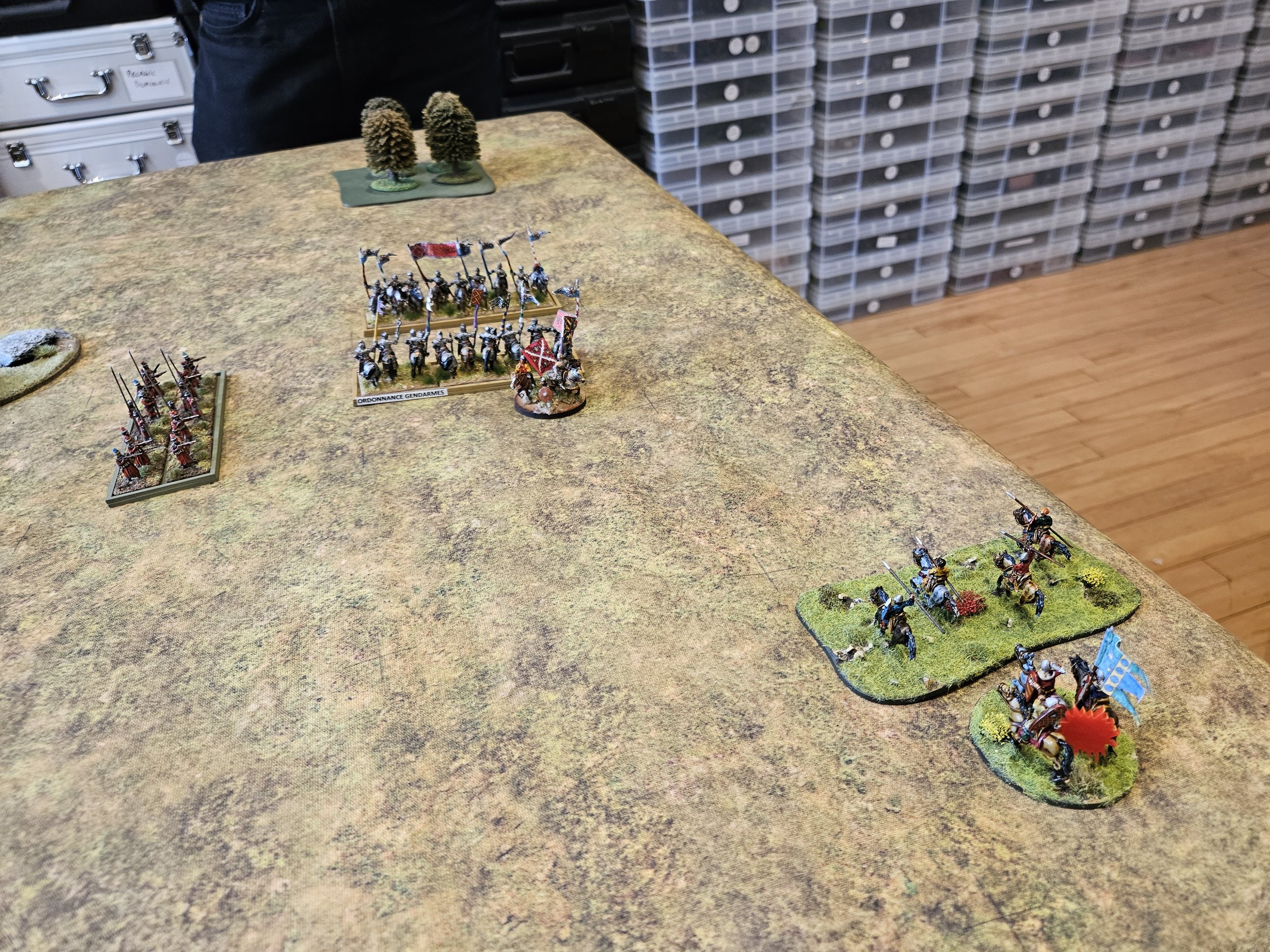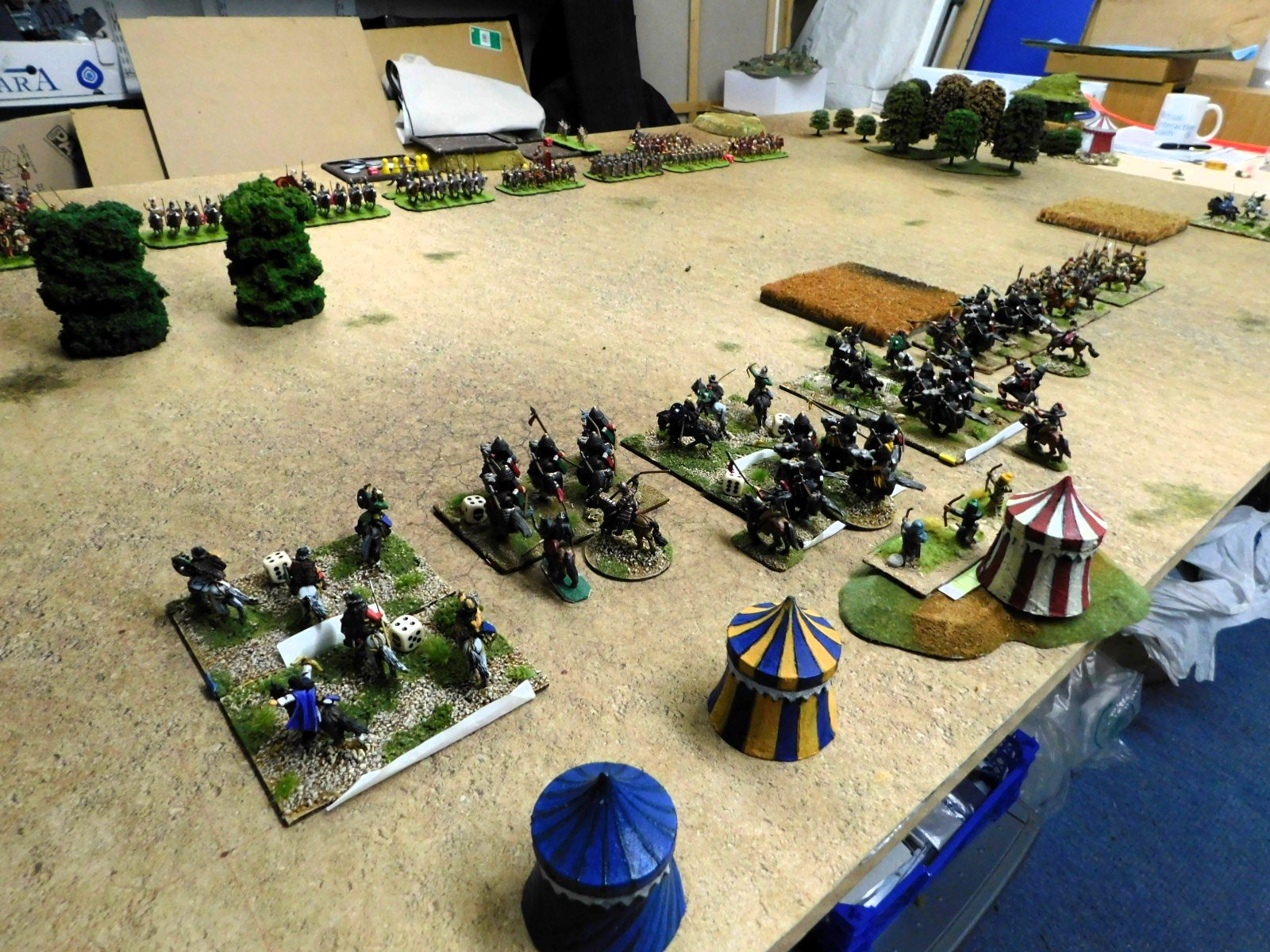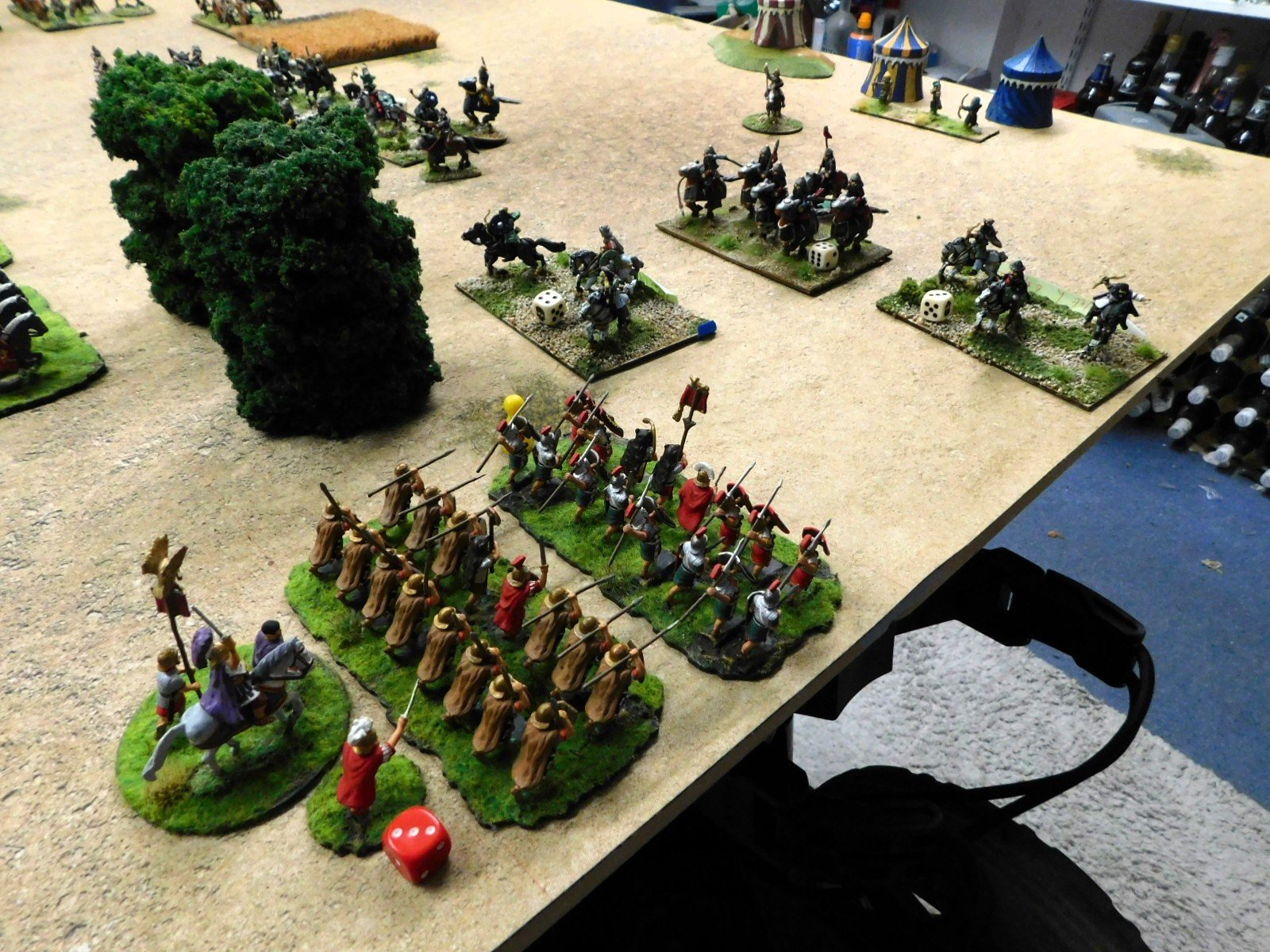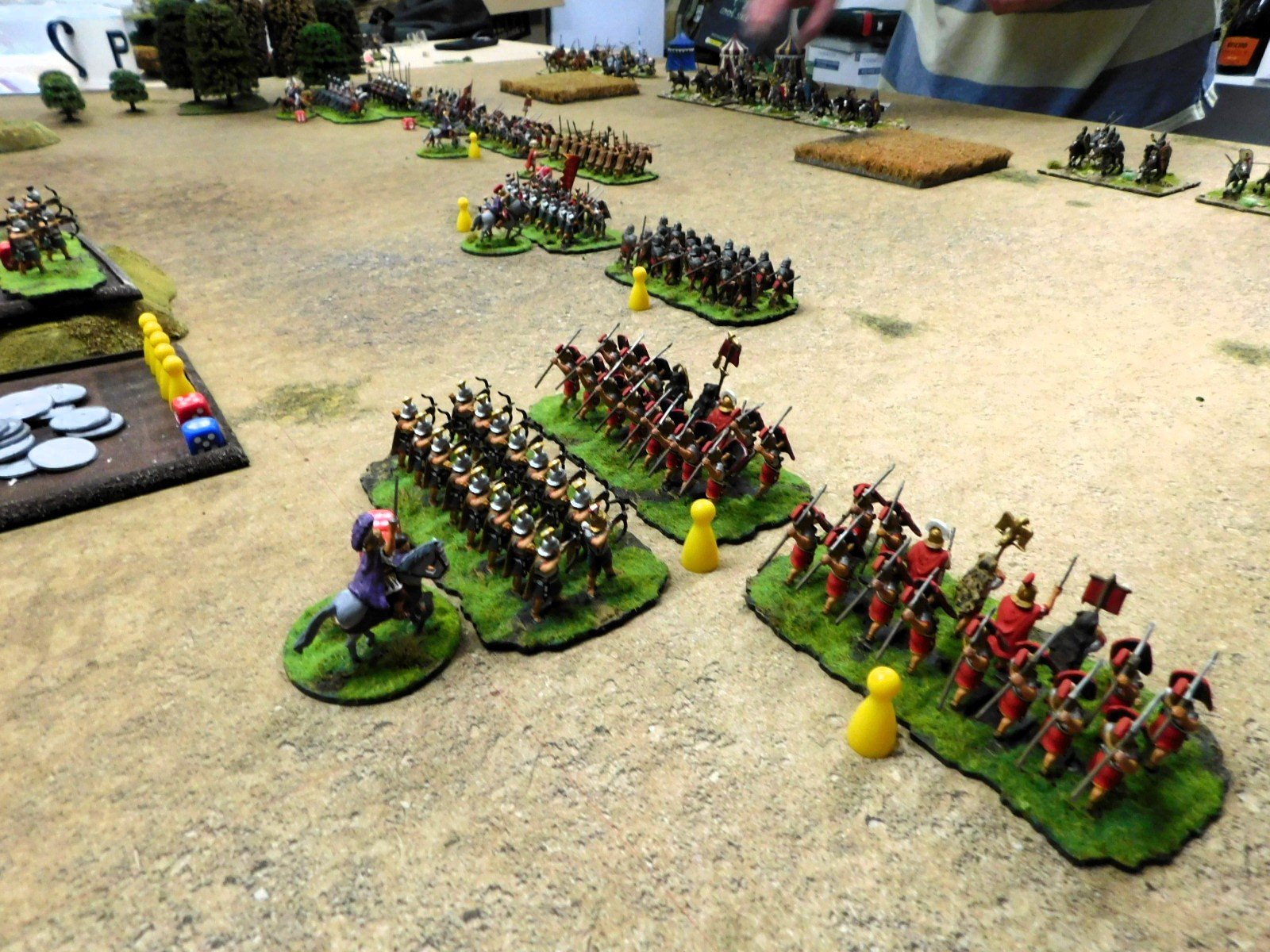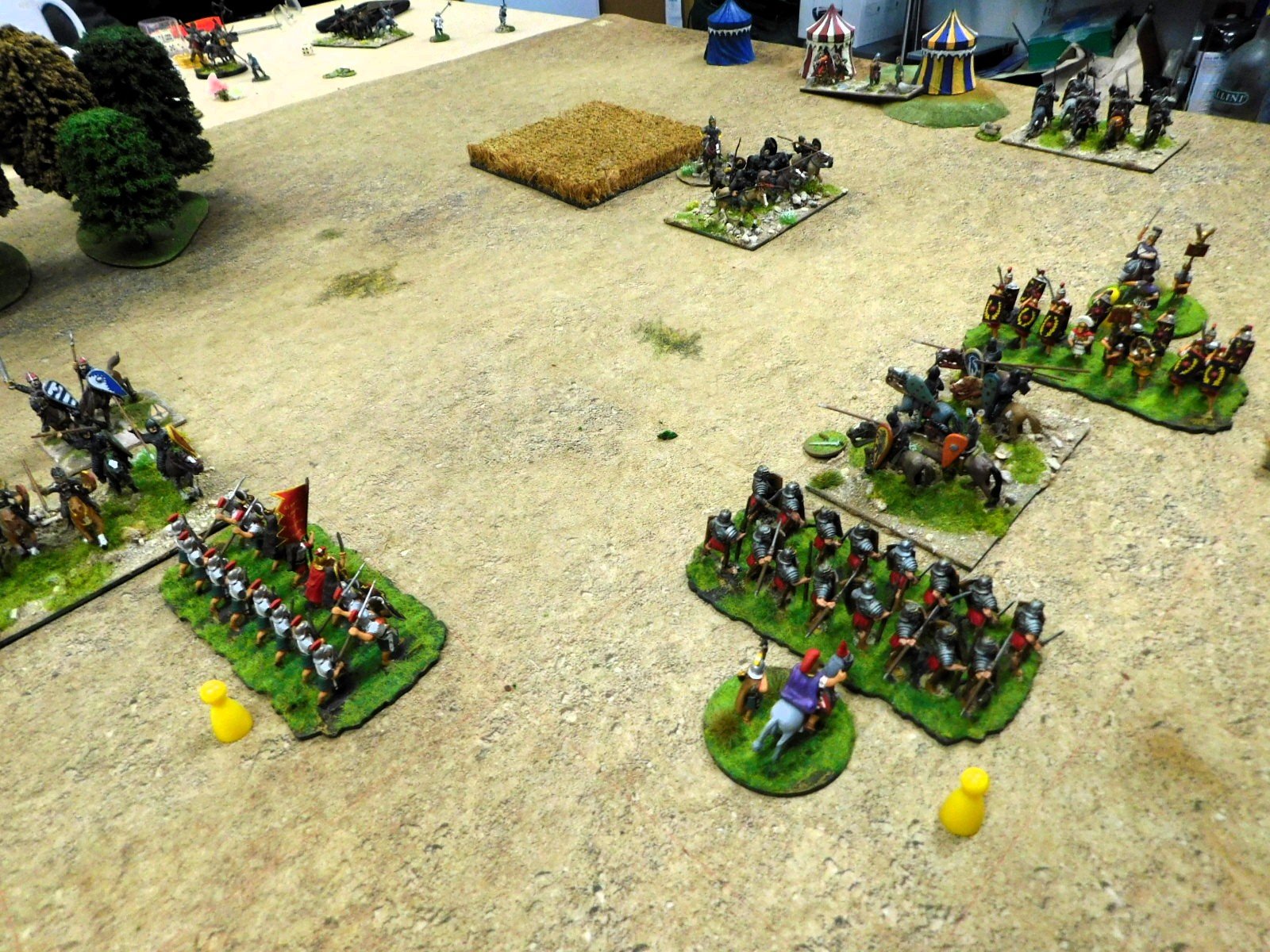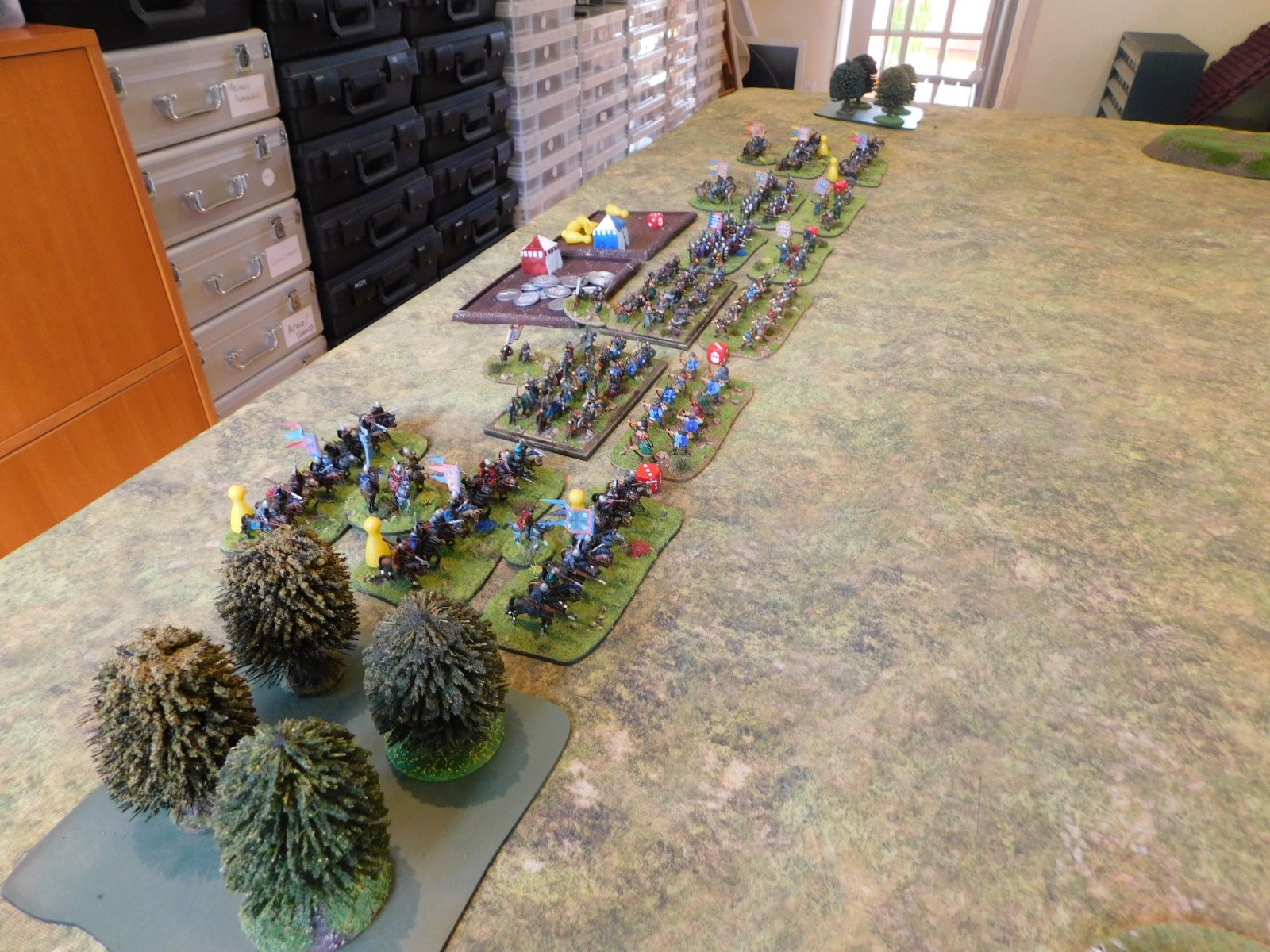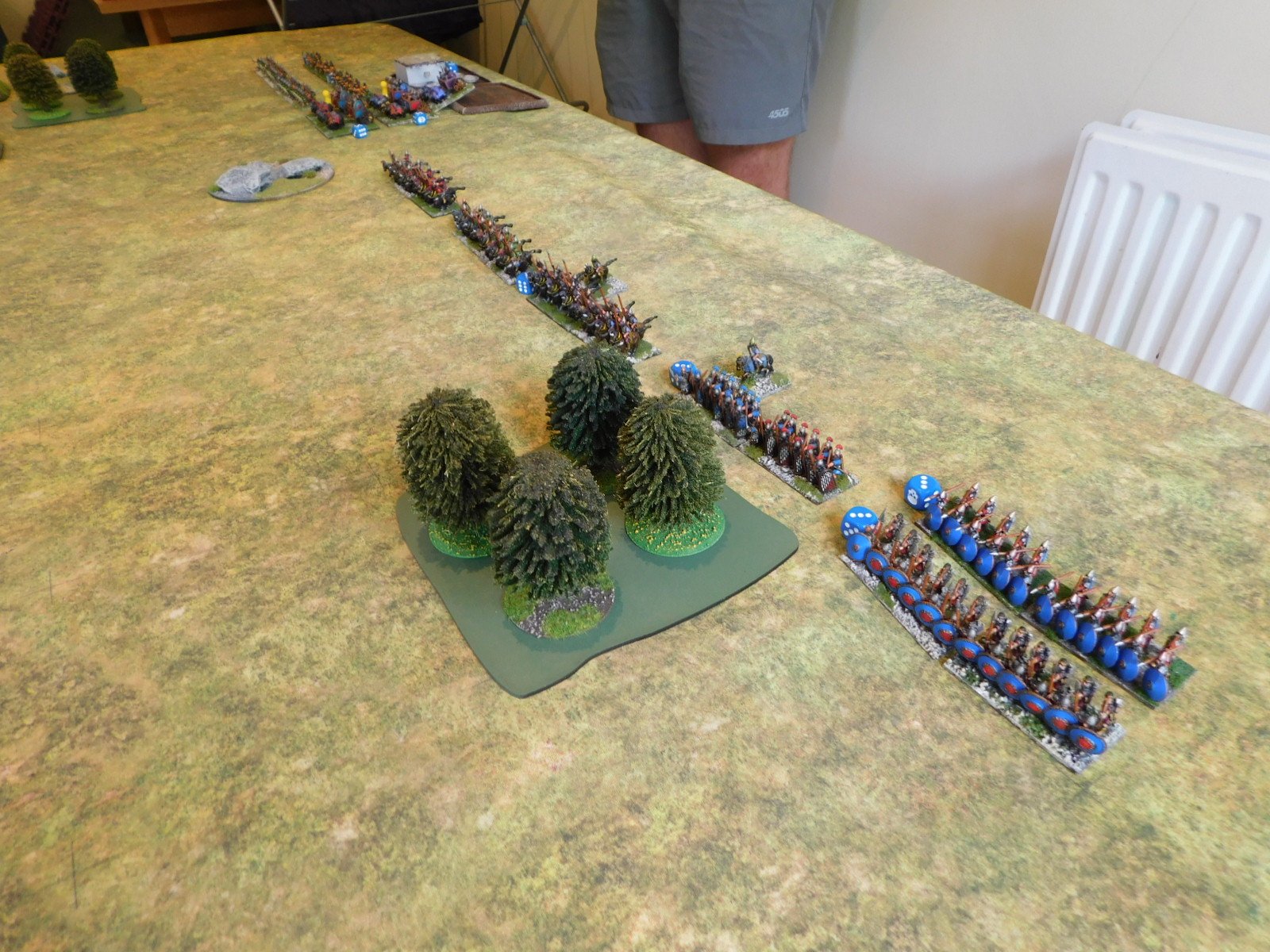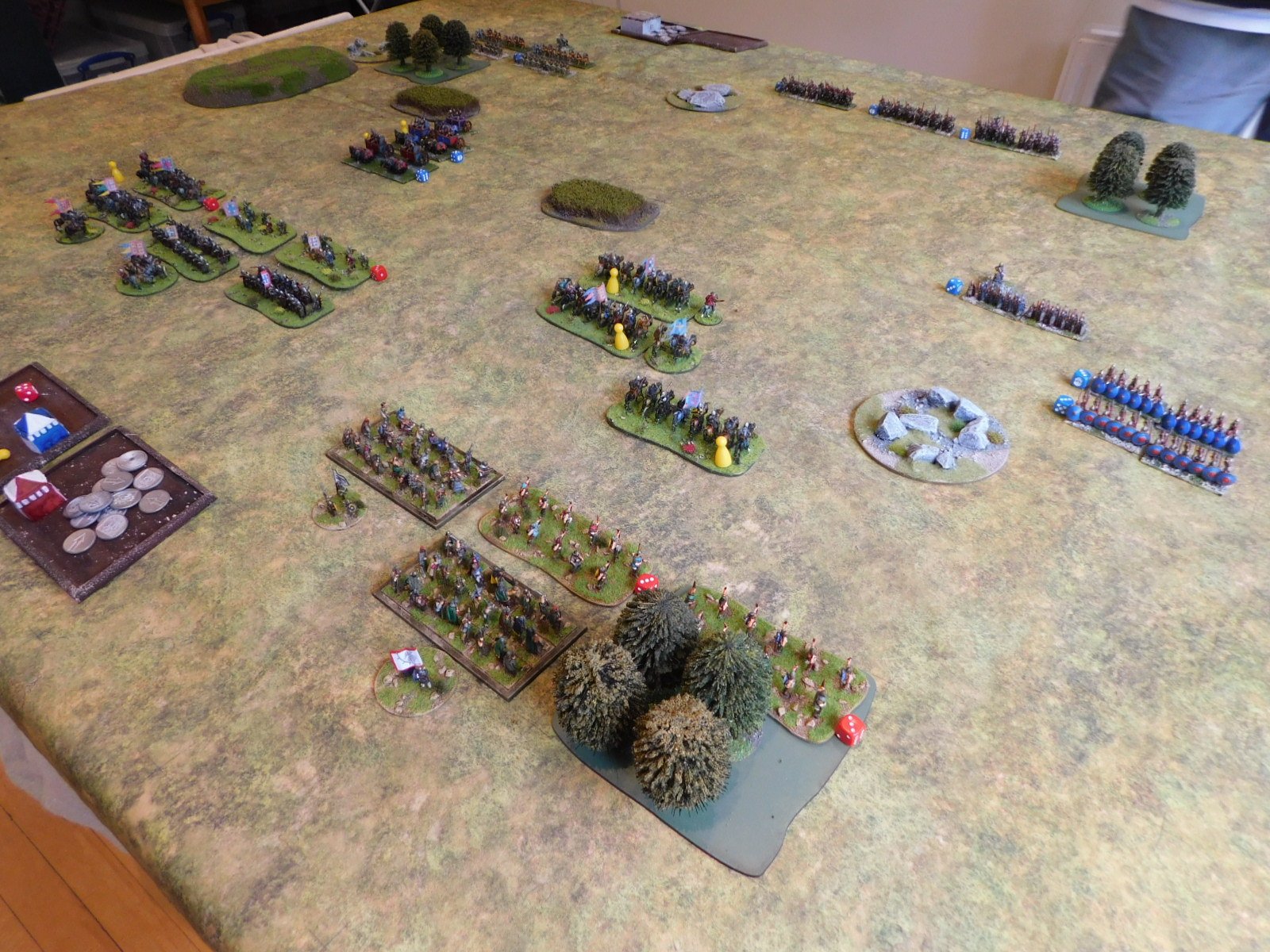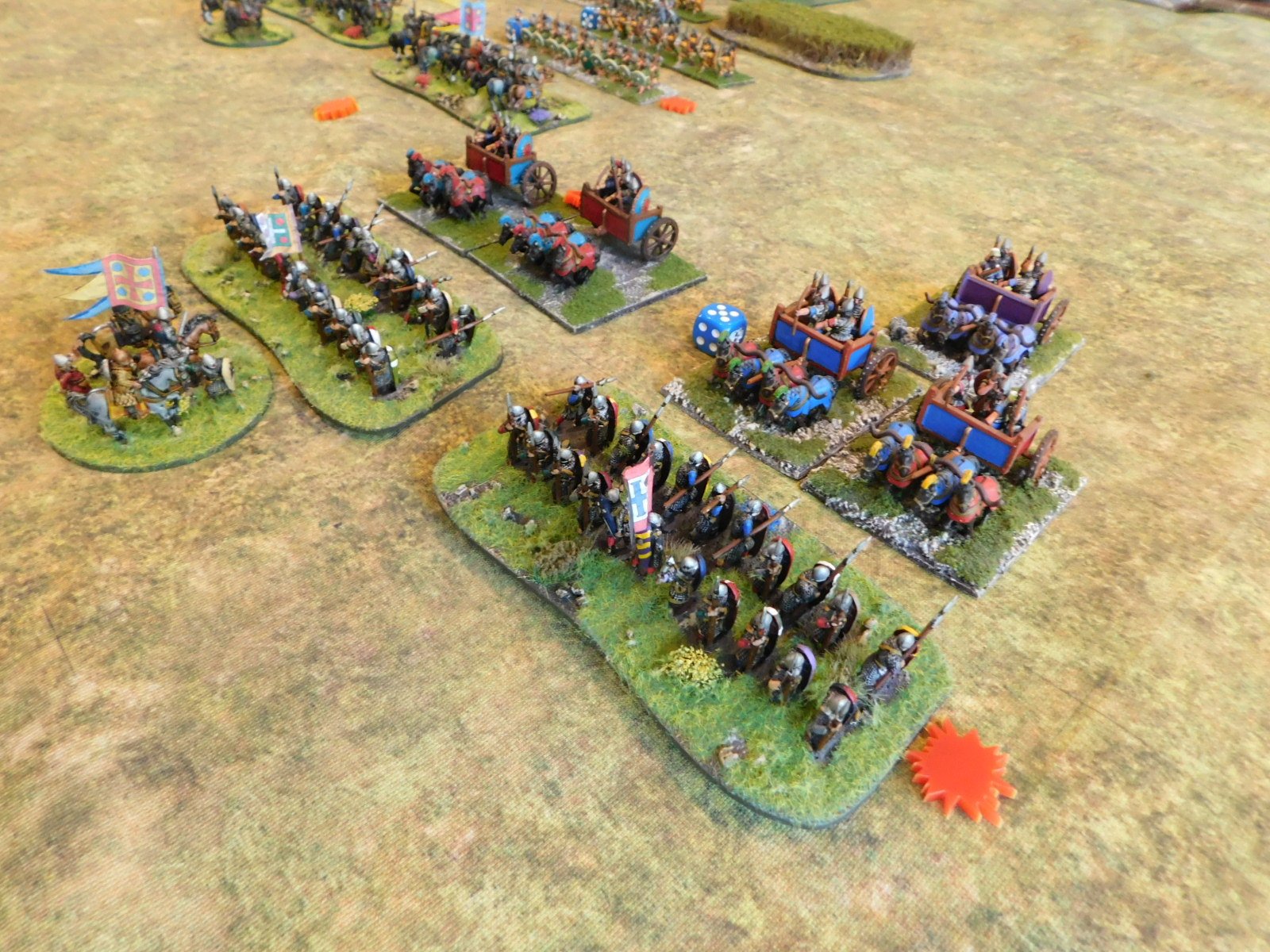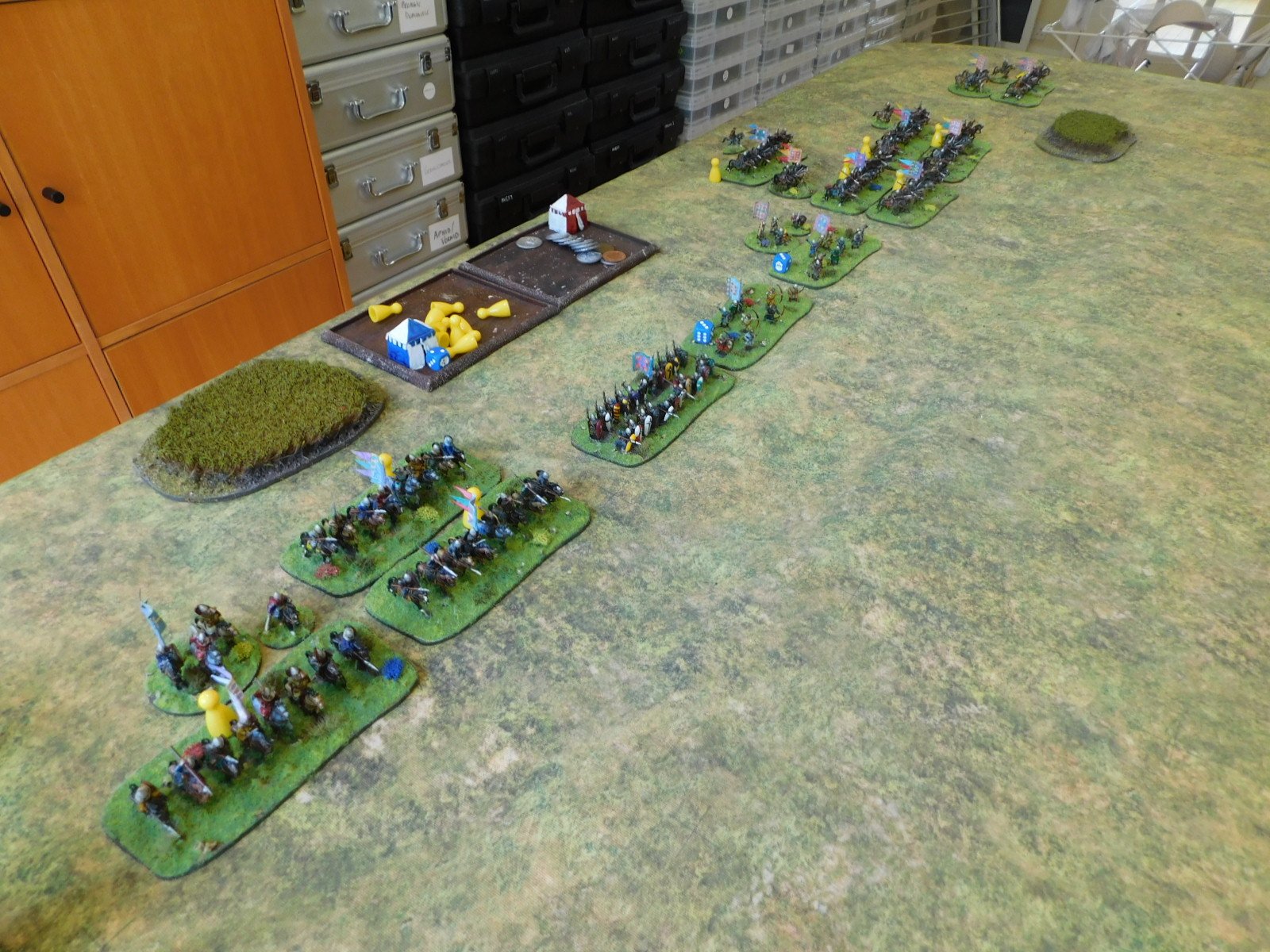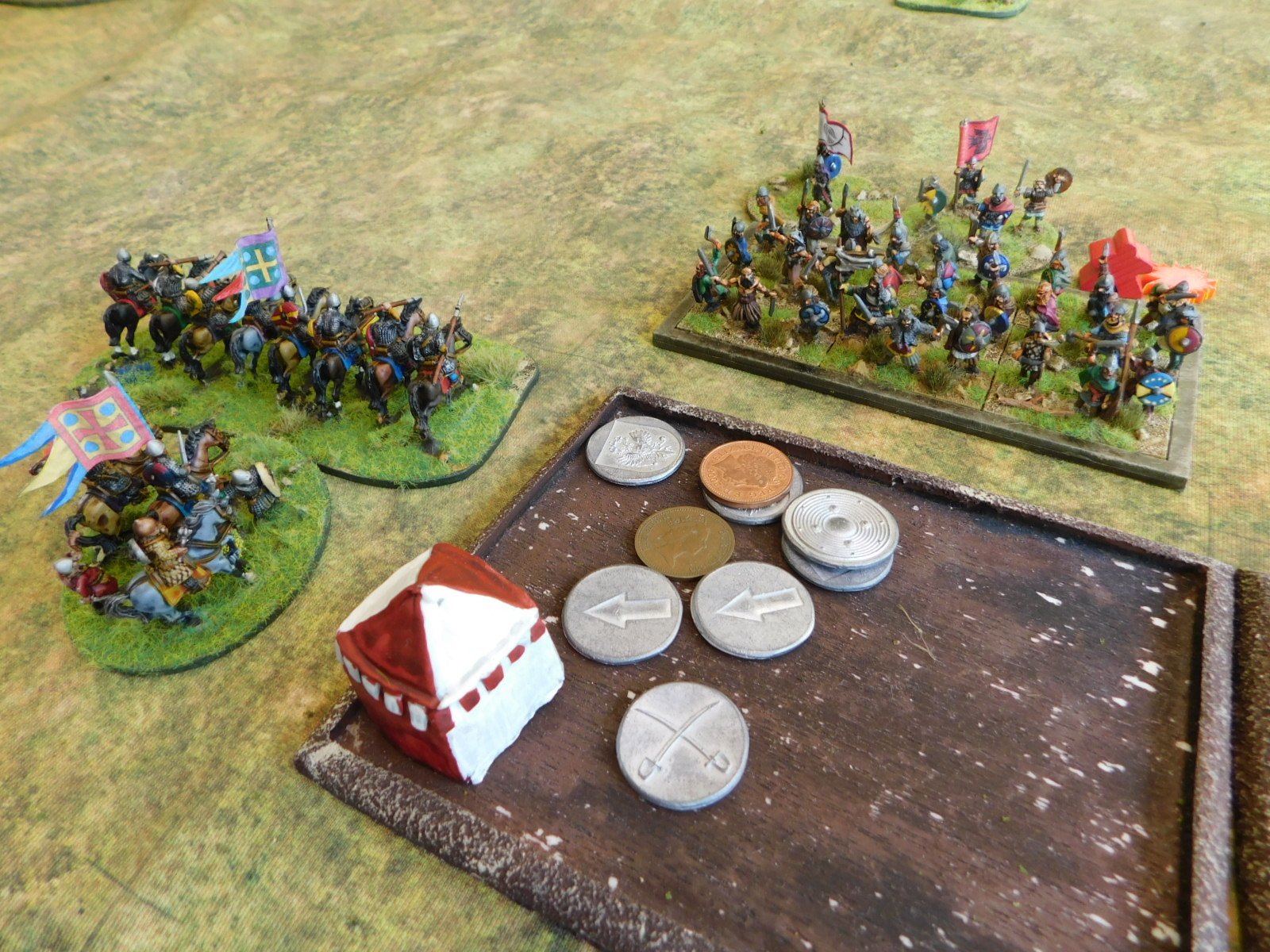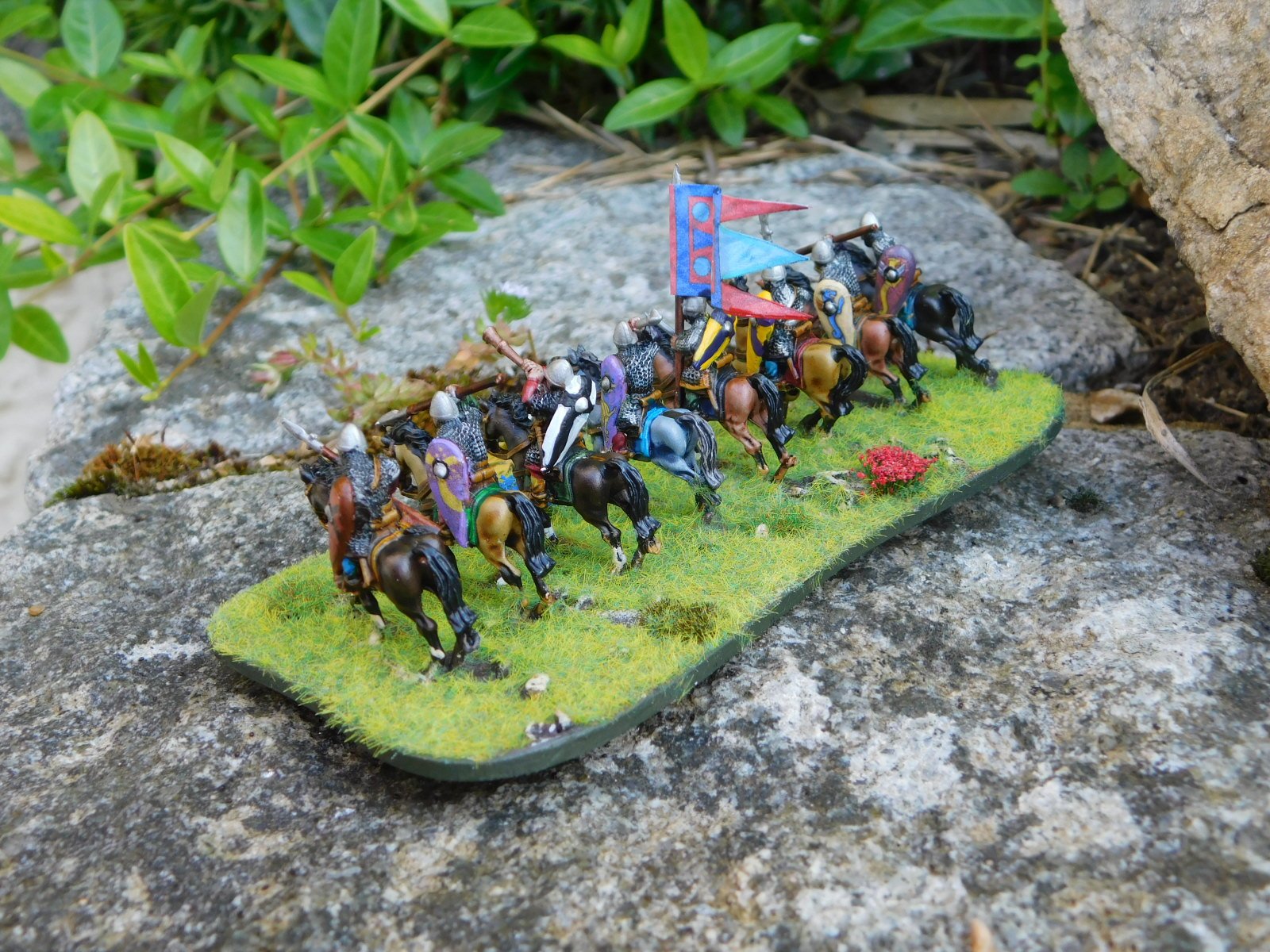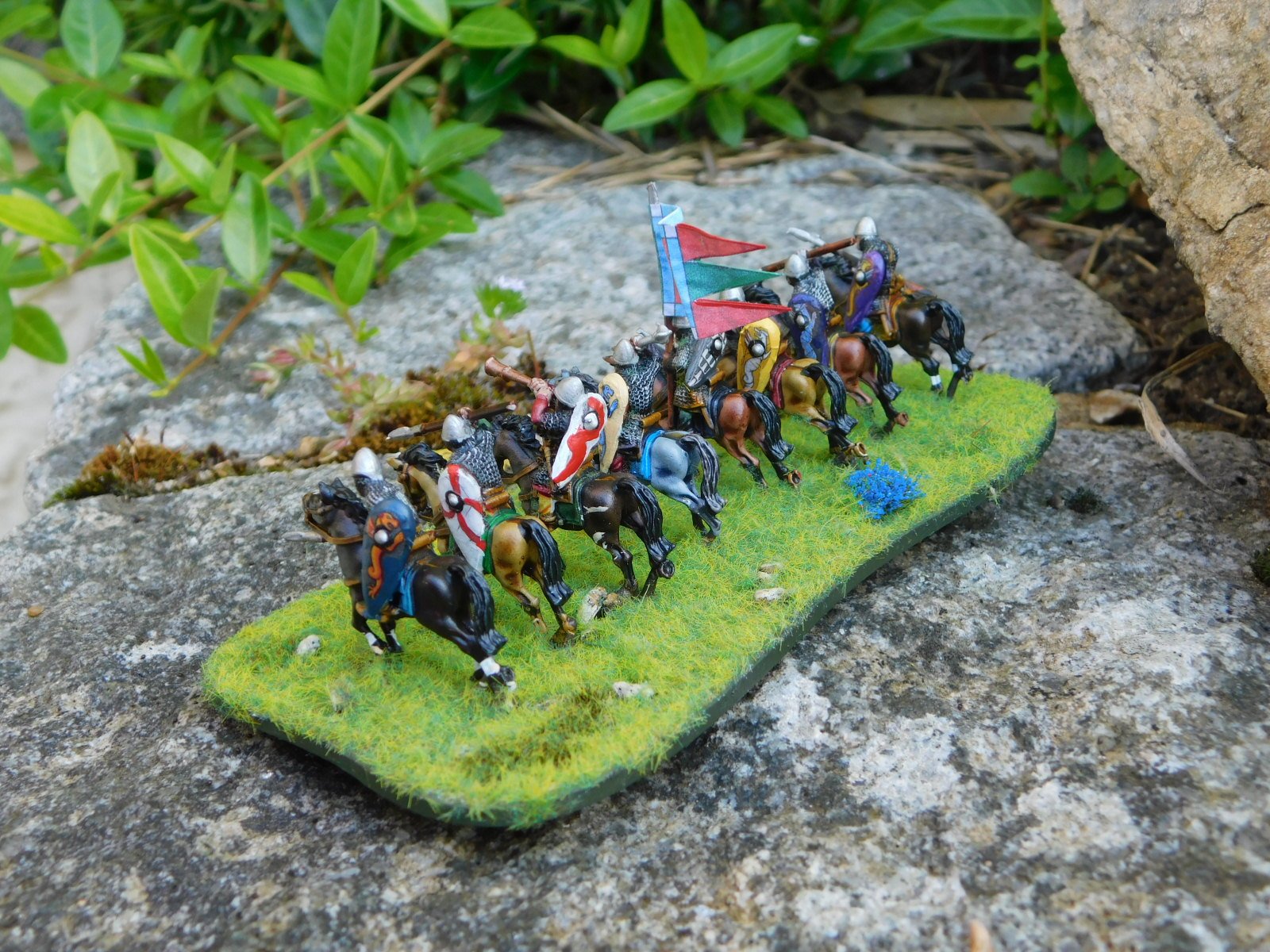TTS AAR: Anglo-Normans versus Hittites
/Time for the re-match: swapping sides so this time I would take the Anglo-Normans and Neil would play the Hittites.
As the game began, I made a bold move down the left flank: sending William the B, Bishop Odo and half my Milites thundering forward to curl round and take the Hittites in the rear.
The Hittites were obviously quick to react, threatening to flank my outflankers. No problem, I thought, it’s my turn and I’ll just move forward out of reach.
This was a bit annoying, to say the least, but the Norman knights are good troops, and I managed to extract them from the mess and even hurt the pesky Syrian light chariots who had tried to rear-end them in the process.
More chariot versus knights fighting followed, with disaster striking the Anglo-Normans as although we killed some more Hittite chariots, William the B was struck down in his prime.
This had serious consequences, as although Bishop Odo had broken through and was riding down the final unit of Hittite chariots on the left, being out-of-command meant that what would usually have been the best ‘pursuit’ card to draw ended up being a failure to move forward, and exposed the Bishop’s rear to more Hittite attacks.
Meanwhile, in the centre, the two infantry lines had come to together and a grinding melee developed.
The Hittites had more chariots, however, and they now burst round my right flank to threaten my camps, guarded only by light infantry - easy meat for the rampaging chariots.
Back to the centre, and the Norman and Anglo-Saxon infantry were gaining the advantage…and Bishop Odo was still alive and kicking!
The situation at the camp was critical (early losses meant that I couldn’t afford to lose it) so I threw everything I could into holding it against the Hittite chariot attack.
It was a close run thing, but eventually the situation was stabilised.
Meanwhile, the situation in the centre had taken an unusual turn, with the Hittite foot, at first looking as if they were going to be overwhelmed, managing to extricate themselves from the danger, leading to a situation that I don’t think I’ve ever seen before:
If you look closely, you will see that the Hittites have the advantage: they have managed to rush back chariots to gain the flank of one of my infantry units, and damage one of the Fyrd units almost to the point of destruction.
Both sides had been haemorrhaging victory medals at a rapid rate of knots, so as the melee resumed, it was a case of sudden death: whoever lost two units would lose the game.
Unfortunately, as luck would have it, it was the Hittites who drew the required blood first, with the Anglo-Normans carrying William the B’s body off with them as they retreated from the field!
So a narrow defeat for the Anglo-Normans, but a great game overall. Much excitement as the fortunes of war swung backwards and forwards, with many desperate moments for both sides!






























































































